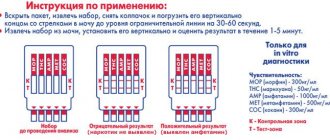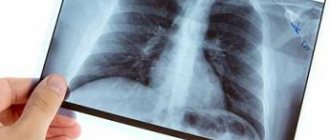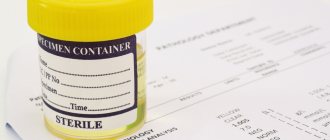Is it possible to donate urine during menstruation?
The answer to the question whether it is possible to donate urine during menstruation is advisory in nature. If possible, the timing of tests should be moved forward. On the second day after the end of your period, you can take a test, it will give the correct result.
If there is an important reason to donate urine during menstruation, you need to warn your doctor about your condition in order to avoid diagnostic errors. The right decision would be to postpone the test or conduct a comparative study after the end of menstruation.
Incorrect collection of samples and incorrect interpretation of their results can lead to erroneous diagnoses, and a woman will be forced to treat kidney and bladder diseases that she does not have.
Quite often, a woman is concerned about another question: is it possible to donate blood during menstruation. Therefore, we recommend that you familiarize yourself with this topic in more detail.
Specific tests
Urine as a biomaterial can be studied not only as part of a general analysis; it is also used for techniques:
- assessment of protein, glucose, creatinine, amylase levels;
- counting of formed elements (according to Nechiporenko);
- determination of the concentration function of the kidneys (according to Zimnitsky);
- Reberg's test;
- for hormones;
- for bacterial sowing
Regardless of the method, the sample should be free of foreign impurities. Of course, there is a possibility that the results, even with menstruation, will be close to reliable data. But it is no longer possible to objectively evaluate them. Therefore, if the patient is not sure that she will submit material to the laboratory that meets the requirements of the preparation rules, it is better to postpone the collection date.
How to properly collect urine during menstrual periods
If a woman has not had time to undergo laboratory tests before her period, she should know that there are two ways to take a urine test during menstruation. The first is available within the walls of a medical institution, the second can be used by any representative of the fairer sex at home.
Catheter
In emergency cases, you can take a urine test during your period. In a menstruating woman, material is collected without urination; urine is given using a catheter. This procedure must be carried out by a medical professional in a hospital setting using a sterile instrument. The result of an analysis collected using this method will be absolutely reliable due to the absence of contact between the collected material and the external genitalia.
This method is used in case of urgent need for diagnosis, since this is a rather unpleasant procedure and there is a risk of damage to the mucous membrane of the urethra and its infection.
Self-collection of material
During menstruation, you can take a test if you follow the rules for collecting biomaterials and the conditions of isolation of the urinary and genital tracts. If you take a urine test during your period, care must be taken to ensure that vaginal discharge does not get into the test sample. To do this you need to do the following:
- Prepare a sterile container. You can buy a special container at the pharmacy or boil a small glass jar yourself;
- wash your hands thoroughly;
- Wash yourself with warm water and soap, moving from front to back, paying special attention to the folds of the labia;
- dry the perineum with a clean towel;
- spread the labia minora with your fingers, wipe them with a sterile swab or napkin;
- insert a tampon into the vagina; if you don’t have one, you can use sterile cotton wool.
There is no need to use disinfectants; they can distort the results of the study.
It is necessary to obtain a medium portion of urine. To do this, start urinating in the toilet, then place the container. Make sure that the jar does not come into contact with the body; keep it a short distance from the genitals.
After collecting 50–70 ml of urine, continue emptying your bladder into the toilet.
Hermetically close the container with the collected material, attach a direction to it and deliver the tests to the medical institution within a period not exceeding two hours after collecting the material.
Notify your doctor about your menstrual cycle status. During menstruation, urine is characterized by the presence of red blood cells, their sedimentation rate increases, which can give a false positive result, indicating the course of infectious processes in the body.
Alternative tests
Is it possible to replace a urine test? Those indicators that are checked with its help (for example, the level of protein loss - that is, proteinuria or sediment in the form of salts, formed elements) cannot be assessed in any other way. However, tests performed using blood samples or other biomaterials appropriate to the type of disease can provide insight into the patient’s condition.
So, for example, the basic tests during examination in any hospital are:
- General blood analysis.
- Determination of glucose level.
- Biochemical tests as indicated (for example, liver tests).
Of course, when the opportunity arises, their results should be supplemented with urine analysis data, if the doctor insists on this.
During menstruation, test strips are not used to assess protein or glucose levels. Research with their help can be carried out even at home, but it is better to postpone it until the discharge stops or use the previously described methods (insertion of a tampon, menstrual cup).
How does menstruation affect results?
The entry of blood components into the urine changes its microscopic and chemical composition. Therefore, it should be understood that analysis during menstruation does not exclude erroneous interpretation of indicators.
The color of urine from a healthy person is straw-yellow. A change in this indicator indicates the presence of renal pathology. Urine mixed with blood is similar in color to urine with glomerulonephritis. The cloudy color of urine is associated with the presence of epithelium or protein, which indicates inflammatory or tumor processes in the urinary tract. Increased specific gravity may be a sign of diabetes and CHF.
https://youtube.com/watch?v=dMEvfFNEvwQ
The anatomical structure of the female genitourinary system allows for the presence of up to 5-6 leukocytes, and no more than 3 erythrocytes in the field of view. Elevated red blood cells are a sign of glomerulonephritis or cystitis. Mucus is found in almost any kidney disease.
With the onset of premenstrual syndrome (PMS) in women, the levels of red blood cells with hemoglobin in the blood can increase significantly.
Ketone bodies (acetone) are a natural breakdown product that passes through the kidney filter, but a small amount of it is not detected by diagnostic methods. An increase in its concentration to levels determined by various methods indicates pathology, for example, diabetes mellitus.
Urine for detection of sexually transmitted infections in men using PCR method
In countries with progressive medicine, smears have not been taken from men for this purpose for 20 years, as this is an invasive, painful procedure. The first portion of urine in the morning or the first portion of urine is given with a break after the last urination for 3-4 hours (the first 5-10 ml in a container, the rest in the toilet). The test requires less than 1 ml of urine. A non-sterile container may be used. Control studies are carried out 3-4 weeks after the end of antibacterial therapy, since the pathogenic microorganism may already be destroyed, and its DNA may remain in the human body for some time.
Impact of menstruation on research
Normally, the color of urine should be straw yellow. A change in this indicator indicates pathology, most often of the kidneys. Blood dissolved in urine gives a color similar to urine with glomerulonephritis. A darker color is characteristic of pathologies of the hepatobiliary and biliary systems. Urine containing epithelial cells and protein becomes cloudy, which is not normal. This phenomenon is typical for tumor processes, which can frighten the patient; it can also be observed with inflammatory diseases of the urinary tract, urolithiasis or intolerance to pharmacological agents. An increase in specific gravity of more than 1020 makes you think about possible diabetes mellitus, heart failure, and nephrotic syndrome. An increase in white blood cells may not occur as often. This condition requires antibacterial therapy, which is extremely unfavorable for a healthy person.
If you do not warn your doctor, a diagnosis such as anemia may be made and appropriate treatment may be prescribed. Next, the body will restore lost red blood cells, and the drugs can help raise red blood counts above normal levels. There is nothing good about this, so you need to warn your doctor.
Thus, it is not advisable to carry out tests during menstruation
But if such a need arises, you need to take precautions when collecting urine and you can get tested. It is advisable to use a hygienic tampon during each urine test to prevent vaginal discharge from entering there.
Follow simple rules and you won’t have to worry about test results.
Remember that the reliability of the results obtained depends on compliance with these recommendations!
General recommendations:
- The following tests are taken strictly on an empty stomach (at least 12 hours after the last meal): - general clinical blood test; determination of blood group and Rh factor; - biochemical tests (glucose, cholesterol, triglycerides, ALT, AST, etc.); — study of the hemostasis system (APTT, prothrombin, fibrinogen, etc.); - hormones; - tumor markers.
- Taking water does not affect blood counts, so you can drink water.
- Blood counts can change significantly throughout the day, so we recommend taking all tests in the morning. All laboratory norms are calculated for morning indicators.
- One day before donating blood, it is advisable to avoid physical activity, drinking alcohol and significant changes in diet and daily routine.
- Two hours before donating blood for testing, you must refrain from smoking.
- For laboratory tests of hormones (FSH, LH, prolactin, estriol, estradiol, progesterone), blood should be donated only on the day of the menstrual cycle that was prescribed by the doctor.
- All blood tests are done before radiography, ultrasound and physiotherapeutic procedures.
Preparing for tests
| Methodology | Preparation |
|
|
|
|
|
|
|
|
|
|
|
|
|
|
|
|
|
|
|
|
|
|
|
|
|
|
|
|
|
|
|
|
|
|
|
|
|
|
|
|
Daily urine for:
|
|
Analyzes during the day
Regardless of meal | After 3-4 hours of fasting |
|
|
| Type of study: | Factors distorting research results: | ||||
| At least 12 hours fasting | Possible without fasting | Physical load - overestimates the indicator | Fear when taking tests increases index | Take analysis strictly from 7 to 10 am | |
| Biochemical studies: | |||||
| Glucose | + | + | + | ||
| Glucose tolerant test (1) | + | + | |||
| Bilirubin (2) | + | ||||
| Creatinine | + | ||||
| Iron | + | ||||
| Uric acid (3) | + | ||||
| Hormones: | |||||
| adrenalin | + | + | |||
| ACTH | + | + | |||
| glucagon | + | ||||
| cortisol | + | + | |||
| norepinephrine | + | + | |||
| parathyroid hormone | + | + | |||
| prolactin | + | + | |||
| STH (somatotropic hormone | + | ||||
| TSH (thyroid stimulating hormone) | + | + | + | ||
| Insulin | The indicator is decreasing | ||||
| Blood tests for infections: | |||||
| Syphilis | + | ||||
| Antigen hepatitis B | + | ||||
| Antibodies to viral hepatitis | + | ||||
| Antibodies to rubella, cytomegalovirus | + | ||||
| HIV | + | ||||
Conducting an ultrasound during menstruation: when it is possible and not
What does frequent urination before, during and after menstruation indicate
? Whether an ultrasound examination can or cannot be performed depends on which organ will be examined. During critical days, if this does not cause discomfort to the woman, you can undergo an ultrasound of the abdominal organs, kidneys, lymph nodes throughout the body, and blood vessels anywhere. For ultrasound examination there are only some restrictions on the days of the cycle if the genital organs are examined.
In case of a preventive examination, ultrasound of the uterus and appendages should be performed on the 7-10th day of the cycle. It is assumed that at this time there is still a small spotting discharge from the genital tract. However, these days are the most informative for searching for pathology of the uterine cavity and cysts on the ovaries.
If the doctor is trying to establish or refute the diagnosis of endometriosis, then it is better to do an ultrasound on the eve of menstruation, on the 25-26th day. At this time, the lesions are largest in size and have clearer outlines.

In emergency cases, an ultrasound of the genital organs is performed on any day of the cycle to help establish a diagnosis, if necessary, to carry out monitoring according to generally accepted recommendations.
Instructions for collecting daily urine (urine hormones)
To obtain reliable results, you must refrain from physical activity, drink alcohol, go to bed the night before at your usual time, and exclude bananas, avocados, cheese, coffee, cocoa, tea, and beer 48 hours before the test. If possible, exclude antibiotics tetracy, quinidine, reserpine, tranquilizers, MAO inhibitors, adrenergic blockers 4 days before the study (in consultation with the doctor).
Before collecting daily urine, prepare a container (at least 3 liters), a sterile plastic container with a volume of 60 ml for transporting urine, a preservative for daily urine (a sample of citric acid) (check with the administrator of the medical center regarding the need for a preservative). During morning urination, completely empty the bladder, pour out this portion of urine, and note the exact time when urine collection begins. All urine excreted after the first urination during the day should be collected in a 3-liter container, which should be stored in the refrigerator (do not freeze). When using a preservative, add it to the first portion of urine and mix thoroughly until completely dissolved. Close the container tightly and stir the contents each time. After 24 hours, i.e. The next morning, empty your bladder and add this portion to the container for collecting daily urine.
IMPORTANT: if by mistake at least one portion of urine was not collected in a container, then all the urine must be poured out and collection must be done again - the results of the study may be incorrect. Then mix the urine in a large container, measure the resulting volume and write it down. Take about 50 ml of collected urine into a sterile container and deliver it to the medical center.
These and other urine tests can be done in our clinics.











